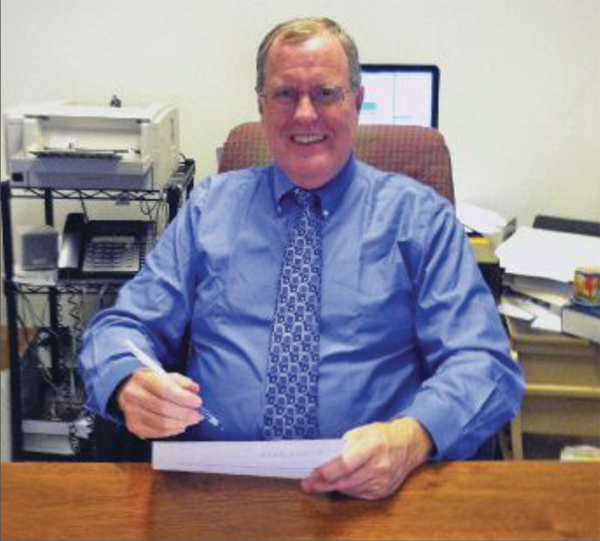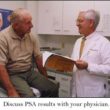Steven Denny on the Recovery Process

Unlike many other men, Steven Denny’s prostate cancer diagnosis didn’t begin with his PSA test. Instead, it started with a kidney stone that landed him in the emergency room. Although the doctors advised Steven that the stone would pass in a few days, he was still waiting-and in pain-5 weeks later. His primary care physician referred him to a urologist to discuss the stone. At that visit, the urologist told Steven his prostate felt “funny” and recommended a prostate biopsy. In January 2017, Steven got the results of that biopsy: he had cancer. In addition, the Gleason score was 9, which is considered high-grade cancer that is likely to grow or spread quickly.
Steven’s physician had been tracking his PSA annually, but it had never risen above 2.3. He didn’t have any symptoms of prostate cancer or a known family history of the disease. “It’s a strange situation,” Steven said, referring to his PSA and diagnosis.
Steven said that his diagnosis story relates to his religious faith. Although he’s an attorney now, Steven was a pastor for 10 years. He feels that that the sequence of events that led to his diagnosis “fits into my worldview.” He said, “The reason I’m alive today is because of my kidney stone pain, which I consider a gift from God.”
Surgery with Dr. Catalona
When Steven found out he had aggressive prostate cancer, he turned to his support community to find a specialist in the disease. He belongs to a small men’s accountability group, and two other men in the group were Dr. Catalona’s patients. On their recommendation, Steven made an appointment to see Dr. Catalona. “I’m very thankful for that,” Steven said. “Dr. Catalona said, ‘Let’s just get it done.’”
In February 2017, Dr. Catalona performed Steven’s radical prostatectomy. In the immediate weeks after his surgery, he relied heavily on the support of his friends and family. “I wouldn’t want to do this alone,” Steven said. He spoke of one friend, a prostate cancer survivor, who visited him in the hospital. In addition, his friends and family coordinated a schedule for walking with him around the neighborhood during the recovery period. “You’ve got to have a community around you,” he said.
Post-operative treatment
After the surgery, Steven learned that the cancer had already escaped his prostate. The surgical team had found cancer in one of his nine lymph nodes. Steven asked Dr. Catalona what would have happened if the disease had not been caught that year. Based on the aggressive nature of his cancer, and the fact that it had already spread, Dr. Catalona told Steven it could have substantially compromised his prognosis.
Because the disease had not been contained to the prostate, Steven had hormonal therapy after the surgery. His post-surgical PSA was 0, but Dr. Catalona advised him to also have post-operative radiation therapy to ensure the disease did not spread further. He encouraged Steven to begin radiation before the PSA rose above 0.
Trials and triumphs
A few months after surgery, it was almost time to begin radiation. Yet, Steven estimated he only had about 70% normal urinary continence. Dr. Catalona counseled him that he should be 100% continent before beginning radiation, as patients may not have better continence than they have at the start of radiation.
Steven brought his concerns to his radiation oncologist, who referred Steven to Dr. Christina Hynes at the Shirley Ryan AbilityLab (formerly the Rehabilitation Institute of Chicago) for pelvic floor physical therapy. The pelvic floor therapy program uses biofeedback to help patients correctly identify the muscles used for Kegel exercises. “It’s amazing,” Steven said. “It’s like a video game. It really helped me see which muscles have to be used—and which are not to be used—when doing the Kegel contractions, so you can have continence.”
Specifically, the biofeedback comes from sensors placed in the rectum that can feel the pelvic floor muscles. The sensors are connected to a computer screen that the patient and therapist both watch as the patient contracts his pelvic floor muscles. “I got past the awkwardness pretty quickly,” Steven said. “I could see if I was failing or succeeding, and I’d get to know which muscles really worked. I wasn’t doing the Kegels properly [before physical therapy].” Steven referred to the rehabilitation as “a miracle program.” After 10 sessions, he achieved success. “After these sessions, I was able to do the Kegels and had 100% continence. If I hadn’t have done that, I don’t know whether I would’ve gotten to 100%,” he said.
The physical therapists told Steven that they hope to see more prostate cancer patients participate in the pelvic floor physical therapy before they have surgery. They think it would help other men who struggle with continence address their issues immediately after surgery. Steven agrees that the pelvic floor therapy process should be available to every prostate cancer patient dealing with regaining continency.
After completing physical therapy, Steven underwent 8 weeks of radiation therapy. He completed the cycle last November.











